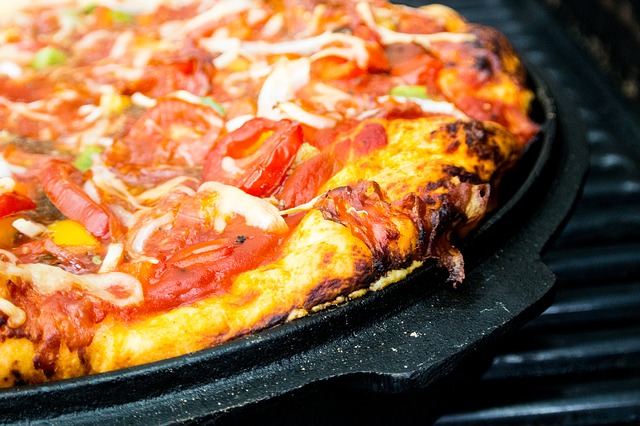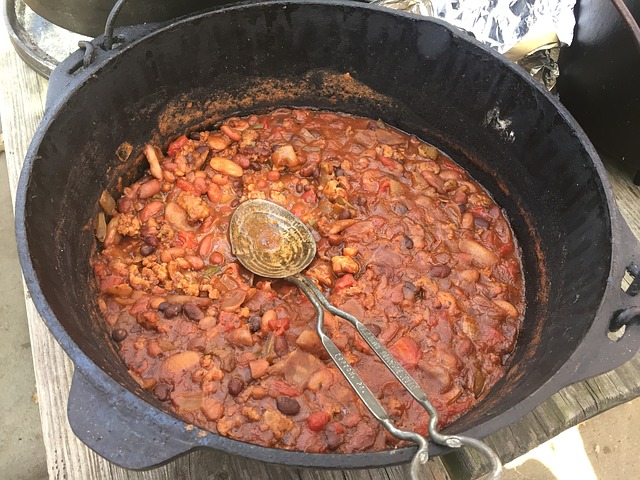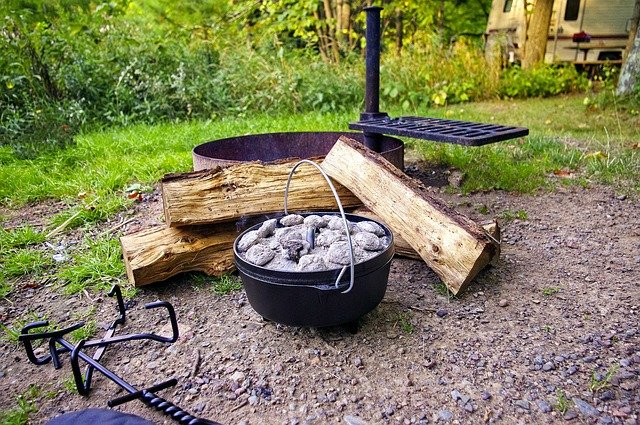Dutch ovens are one of the most versatile pieces of equipment you can carry while camping. Your Dutch oven provides you with all the different ways to cook at a place where you can only dream of having good food. It can simmer, fry, bake, and even steam food in a place where your camp stove would fail to provide you with all these cooking techniques. So next time you go out camping with your friends, make sure that you carry your Dutch oven to enjoy moments without compromising your health.
Cooking in a Dutch oven can be tricky for starters compared to coals or live embers; however, the whole process of cooking in it is another experience worth having with your camping friends. It requires you to have a good knowledge of the heat levels and coal ratios, but don’t worry; we have got you a full guide on how to cook in your Dutch ovens while camping.
What is a Dutch camping oven?
A Dutch camping oven is usually a large metal pot made of cast iron with a lid and a handle on top of it. It also has three legs to sit comfortably on the coals if you are using them for heat. The Dutch camping ovens come pre-seasoned, a vital element while cooking in the campfire.
Some of the other types of unseasoned camping Dutch ovens are also available in the market made up of cast aluminum or ceramic, which are not recommended for camping. However, if you have opted for an unseasoned Dutch oven, we have still got you covered, as we will also discuss the steps to season your Dutch oven in this guide. If you are looking to buy a Dutch oven for camping purposes, here are some differences between a classic and a Dutch camping oven to ensure that you opt for the right one.

Difference between home and camping Dutch ovens?
Material
Classic Dutch ovens such as Staub and Le Creuset are enameled rather than being seasoned. These kinds are also called French ovens at times. However, camping Dutch ovens are seasoned and provide various benefits over Dutch home ovens.
Home Dutch ovens are easier to clean than camping ones, but they have a high chance of getting burnt while cooking. The heat tolerating ability of these ovens is highly reduced because of the enamel seal, making them non-recommended to use above direct heat from the campfire.
Legs
A major difference between the two Dutch ovens is the legs situated beneath the oven. Home Dutch ovens come with a flat bottom representing their use for home cooking, while the Dutch camping ovens have three legs to support them on top of the burning group of coals.
Handle design
The handle design of a Dutch home oven is like a knob that is difficult to carry and move while cooking outside of the home, whereas a Dutch camping oven has a bail style handle that allows you to move it with ease while cooking at the campsite.
Lid
Classic or Dutch home ovens have a domed lid that helps the oven trap the steam inside the pot. Its round shape also helps the heat to circulate in the pot for even cooking. On the other hand, Dutch camping ovens have a flat lid with slightly raised corners, allowing the coal to sit comfortably above the lid without falling off.
Best Dutch ovens for cooking while camping
Camping Dutch ovens are of two different types; they are either shallow or deep. Both types have their cooking benefits. Shallow Dutch ovens are made for baking purposes, while deep Dutch ovens are used for cooking food that involves a lot of liquid, such as soups and stews. Following are some different sizes of Dutch ovens highly recommended for you to buy.
Lodge 10 inch 4 qt
This size is ideal for two to four people. It is quite inexpensive and comes pre-seasoned, so you don’t need to worry about seasoning it yourself.
Lodge 12 inch 6 qt
This oven type is shallow as its size is wider than the previous one. You can cook food for 4 to 6 people quite easily.
Lodge 12 inch 8 qt
If you are looking for an oven that cooks food for your whole group of 6 to 8 people, this size is highly recommended. It’s wider and deeper than the previous two sizes, allowing you to cook large quantities of food simultaneously.

Steps for seasoning your Dutch oven
Some of the Dutch ovens do not come pre-seasoned, so you need to season it yourself to make sure that the metal is protected from rust. Seasoning puts a non-sticky layer around the pot, making it easier to clean after cooking. Here are some steps to season your Dutch oven
- Clean your new Dutch oven with water and let it dry.
- Put it on the BBQ once it completely dries out.
- Take vegetable fat and spear it all over the Dutch oven.
- Make sure that everything is covered with fat, including the lid, handle, and legs.
- Now cook the fat into the metal to give it a coating of a non-sticky layer of fat.
- Repeat the process two to three times to make sure the layer completely covers your Dutch oven.
This process can also be done in the oven, but it can produce a lot of smell, so it is recommended that you season it outside your house on a bbq.
How to cook in a Dutch oven

Setting the right temperature
Before cooking the food, you must set the temperature right to make sure that your food does not get burnt. Temperature setting is an art that you will have to master as it can get tricky at times, but this is made quite easy with a simple formula which we will provide you in this guide.
Most of the food cooked at the campfires requires a temperature up to 350-degree Fahrenheit. It is difficult for a person to keep track of the temperature without carrying an oven thermometer. But fortunately, there is another method of reaching your desired temperature by using a specific number of charcoal briquettes or wood embers you are using.
For a 12 inch pan, simply double the size of your pan and add one to it, so you will need 25 wood embers or charcoal briquettes to reach the temperature of 350 degrees Fahrenheit.
Heating
The heating of the oven depends upon the method of cooking you are using. If you want to bake, it is recommended that you put your wood embers below as well as on top of the lid of your oven. Other cooking methods such as steaming require heat from a singular source only below the pot.
Cooking in a Dutch camping oven
Simmer and Boiling: A deep Dutch oven can be used to boil your favorite food. Whether it be simmering soups or steaming rice, it can cook everything because of its versatile character.
Steaming: You can steam your favorite lobsters in your Dutch oven while camping as its tight lid makes steaming possible for any kind of food. All you need is a bit of water with a steaming basket that fits inside the pot.
Sear, sauté, and pan-fry: Your Dutch oven can also cook food at high heat levels. It can sear steaks, fry chicken thighs, and even sauté vegetables in it.
Braise: Slow cooking at low heat requires a dual heating system. Dutch ovens are designed in a way that they can be made to work like an oven. You need to put the hot coal above the lid as well and leave your food with a little bit of water trapped under the lid. The moist environment inside the pot helps the food to cook evenly.
Bake: baking is similar to braising as it also requires heat from both sides of the pot. You can bake your favorite biscuits and pies easily while camping.
Accessories to buy with a Dutch oven
There are some accessories that we advise you to buy and carry along with your Dutch oven before leaving for camping. These accessories include
- Heat resistant gloves
- Metal tong
- Lid lifter
- Shovel
- Metal skewers
- Tripod
- Pot scrapers
- Charcoal chimney
Best recipes to cook in the Dutch oven while camping
Here are some of the suggested recipes that you must try cooking in your oven on your campsite
- Chili mac
- Dutch oven chili and cornbread
- Apple pie
- Mac and cheese
- Dutch oven enchiladas
Conclusion
Camping Dutch ovens are manufactured while keeping all your camping needs in mind. Their shape and size are set in a way that makes endless food recipes possible to cook at a site where a regular camp stove would fail. Their use is not as difficult as it may seem, but they do require a little bit of learning for the starters. The high quality of food prepared by these ovens is worth the time to learn how to use them.
